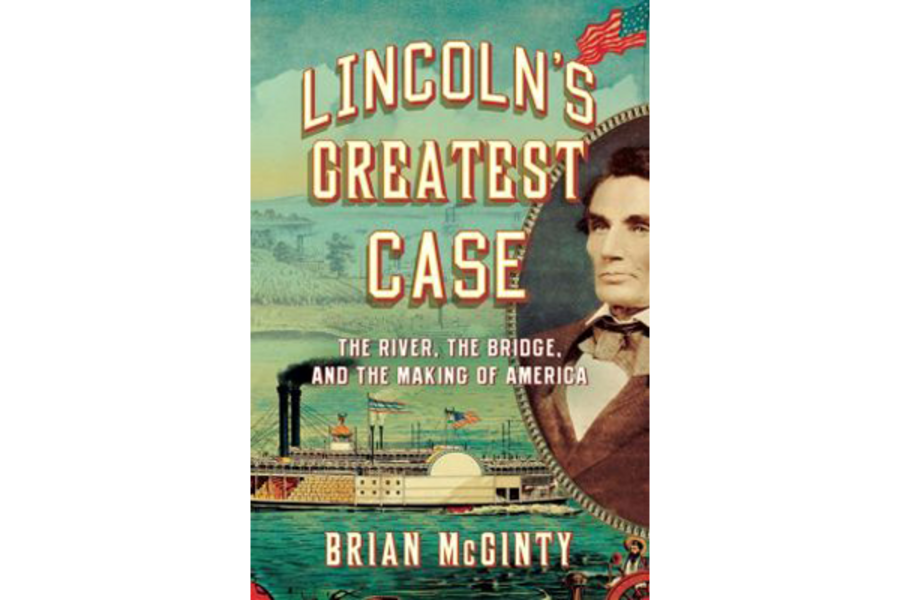'Lincoln's Greatest Case' showcases the impressive legal skills of America's 16th president
Loading...
The Great Emancipator, the rail-splitter born in a log cabin and arguable our greatest president, was also a crackerjack lawyer. Had it not been for the contentious 1854 Kansas-Nebraska Act and the 1857 Dred Scott case, Abraham Lincoln likely would have remained at the bar and enjoyed a long and prosperous life as a litigator.
He served in the US House of Representatives, from 1847-49, but had pledged to step down after his term was up. He kept his word and returned to lawyering.
Lincoln would whittle while he litigated. He rarely took notes. His down-home inquisitions often began with, “Now, your honor, I reckon....” But there was a method to his folksiness. Judges, jurors, and opposing counsel tended to like him. He seemed fair and by all accounts he was. He didn’t overplay the evidence. His homeliness also had the effect of lulling his adversaries into overconfidence. One lawyer who worked cases both with and against Lincoln explained that a courtroom foe who underestimated him would “very soon wake [up] with his back in a ditch.”
For those readers who wonder whether there is yet more to be written about our 16th president, this book provides the answer. Author Brian McGinty, who is an attorney, has established a niche writing legal history, including two previous books that focus on Lincoln and the law while he was in the White House.
In a sense, Lincoln’s Greatest Case: The River, The Bridge, and the Making of America is the prequel in McGinty’s trilogy. It chronicles an important national case on the eve of the Civil War. It would be Lincoln’s last great hurrah as a lawyer, and its outcome would be relevant to the great crucible to come. One wonders why it is so little known.
On May 6, 1856, the Effie Afton, a large steamboat carrying 200 people and hundreds of tons of cargo and livestock up the Mississippi River, ran smack into a brand new railroad bridge at Rock Island, Illinois. Opened just two weeks earlier, the Rock Island Bridge was the first to be built across America’s greatest river; it would provide an economic boon to the region as well as serve as the gateway to the nation’s western expanse.
Others, however, saw it as a “material obstruction” to the safe navigation of steamboats, which had ruled the river and its lucrative commerce for nearly half a century. At mid-century New Orleans was the fourth largest port in the world, but northern railroads were already siphoning off trade.
The owners of the steamboat, whose passengers survived but whose boat and cargo were a total loss, did what Americans then and now are wont to do: they sued. But this was no simple accident claim. It pitted north against south, St. Louis (a slave city) versus Chicago (a free one), strict Constitutional constructionists against those who saw a wider role for the federal government in financing national infrastructure. Lincoln would be part of a team of lawyers defending the owners of the bridge against the plaintiffs. Those who wanted the bridge torn down included the St. Louis Chamber of Commerce and then US Secretary of War Jefferson Davis, who preferred a southern railroad route to the west to facilitate the expansion of slavery.
McGinty does a masterful job bringing this 157-year-old case to life, drawing on the extensive coverage of it in Chicago and St. Louis newspapers, while studiously noting the regional biases in the reporting. The official trial records were lost in the Chicago fire of 1871. Lincoln, often remembered as a “prairie lawyer,” was brought into this big city trial as a courtroom gunslinger, well after the suit had been filed. He boasted a diverse portfolio, including an appearance before the United States Supreme Court, and a reputation as someone who could close cases.
The suit was heard in the US Circuit Court in Chicago, and Lincoln’s commonsensical advocacy was captured verbatim in the press. The water and wind were high when the Effie Afton docked below the bridge, along with other steamboats, waiting for a propitious time to pass under it. Lincoln noted that the captain did not take this opportunity to reconnoiter the new bridge, and when he finally set out, he first backed into another parked steamboat before racing to pass another vessel as he approached the draw.
“What is reasonable skill and care?” Lincoln asked. “This is a thing of which the jury are to judge. I differ from the other side when it says that they are bound to exercise no more care than was taken before the building of the bridge. If we are allowed by the legislature to build the bridge, when a pilot comes along it is unreasonable for him to dash on heedless of this structure which has been legally put there.”
In 1862 President Lincoln signed the Pacific Railroad Act, which promised federal aid to the iron highway that would traverse the continent. As usual, he was on the right side of history. Today there are more than 200 bridges across the Mississippi River, and the Rock Island Bridge would play an important role in the supplying and deployment of Union troops during what would be the first “railroad war.” The Confederacy’s paucity of track was no small factor in its defeat.








